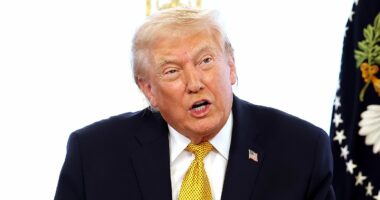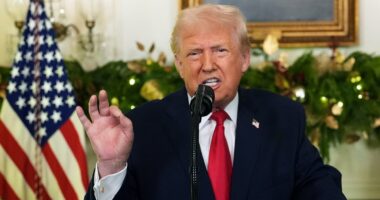Share this @internewscast.com
Rafael Grossi, the chief of the International Atomic Energy Agency (IAEA), indicated on Saturday that his organization believes a substantial portion of Iran’s near-weapons-grade uranium stockpile has remained intact following bombing operations by Israel and the United States this past June.
In a discussion with a Swiss newspaper, Grossi explained that the IAEA suspects that the bulk of this uranium is still housed within Iran’s main nuclear installations situated at Isfahan, Fordow, and Natanz. Despite suffering severe aerial assaults from the United States in June, these facilities appear to have retained much of their uranium reserves.
The IAEA’s recent report assesses Iran’s uranium reserves at approximately 400 kilograms, enriched to a 60 percent purity level—significantly higher than what is required for civilian applications, yet not quite reaching the threshold for weaponization. Since the airstrikes in June, the IAEA has been pressing Iran for information on the uranium, but Iranian cooperation has been limited.
“Will we gain access to this uranium? What will be its fate? Will Iran opt to retain it, dilute its enrichment levels, or perhaps transfer it abroad? Numerous possibilities exist,” Grossi remarked on Friday.
Iranian authorities, including Foreign Minister Abbas Araghchi, have acknowledged the substantial damage inflicted on Isfahan, Fordow, and Natanz by U.S. strikes. However, they assert that most of the enriched uranium survived and is entangled within the debris of these sites.
Last week, the Washington-based Institute for Science and International Security (ISIS) noted through satellite images that Iran appears to be initiating efforts to clear the tunnels leading into the underground Isfahan complex.
“However, the visible activity does not indicate a dash to remove possible centrifuge or enriched uranium stocks inside the tunnel complex; rather it points more towards preparing controlled and secure access to two of the three tunnel entrances, and hardening the entrances and utilities against future strikes,” ISIS said.
Foundation for the Defense of Democracies (FDD) non-proliferation expert Andrea Striker said Grossi’s comments echoed findings by the U.S. and Israeli governments that Iran’s uranium stockpile is intact, but most of it lies buried in the rubble of the destroyed facilities, and Iran’s ability to process the 60-percent uranium into weapons-grade material has been destroyed for the time being.
“Should it attempt to recover and relocate the stocks, Tehran would be gambling on whether those two countries will militarily act to stop the regime,” Stricker said.
Ali Larijani, secretary of Iran’s Supreme National Security Council, said on Monday that Iran has canceled its inspection agreement with the IAEA, thus ending the last vestiges of its cooperation with the U.N. nuclear watchdog.
Larijani said Iran was making good on its threat to stop working with the IAEA if the European signatories to the 2015 nuclear deal, formally known as the JCPOA, invoked “snapback” sanctions against Iran.
The so-called E3 nations – France, Germany, and the United Kingdom – initiated the process of snapback sanctions in August, on the grounds that Iran was failing to meet its obligations under the JCPOA. The Trump administration applauded the move, saying it was long overdue for the E3 to join America’s assessment that Iran was cheating on the deal.
The U.N. Security Council (UNSC) imposed snapback sanctions in September. Enraged Iranian officials demanded the rest of the world ignore the sanctions to continue doing business with Tehran. So far, only China and Russia have stood behind Iran.
“Our foreign minister announced after the Cairo meeting that if the trigger mechanism is activated, the negotiations will be considered null and void,” Larijani said on Monday, referring to a meeting between Iranian officials and IAEA representatives in Cairo last month.
“If the agency has a request in this regard, it should submit it to the secretariat of the supreme national security council so that it can be reviewed,” he sniffed.
Larijani said Tehran believes “applying the trigger mechanism was a wrongdoing on the part of Europe that has no basis, and in fact, the Europeans abused the snapback, while the Iranians had met all the conditions for the past 10 years.”

















